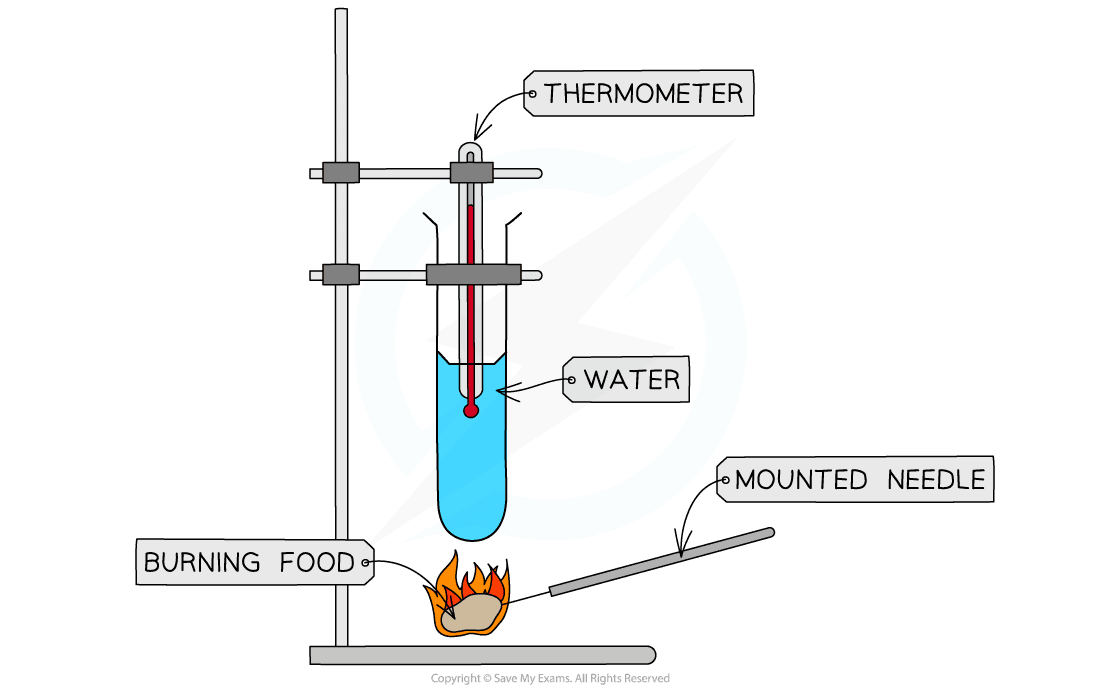Practical: Energy Content of a Food Sample
We can investigate the energy content of food in a simple calorimetry experiment
Apparatus
- Boiling tube
- Boiling tube holder
- Bunsen burner
- Mounted needle
- Measuring cylinder
- Balance/scales
- Thermometer
- Water
- Food samples
Method
- Use the measuring cylinder to measure out 25cm3 of water and pour it into the boiling tube
- Record the starting temperature of the water using the thermometer
- Weigh the initial mass of the food sample
- Set fire to the sample of food using the bunsen burner and hold the sample 2cm from the boiling tube until it has completely burned
- Record the final temperature of the water
- (Once cooled) weigh the mass of any remaining food and record
- Repeat the process with different food samples
- e.g. popcorn, nuts, crisps

Different food samples can be burned in a simple calorimetry experiment to compare the energy contents of the samples
Results
- A larger increase in water temperature indicates a larger amount of energy contained by the sample
- We can calculate the energy in each food sample using the following equation:
Energy transferred (J) =
(mass of water (g) x 4.2 x temperature increase (°C)) ÷ (mass of food (g))
The Energy Content of Popcorn and Walnuts Table

Limitations
- Incomplete burning of the food sample
- Solution: Relight the food sample until it no longer lights up
- Heat energy is lost to the surroundings
- Solution: Whilst heat lost means that the energy calculation is not very accurate, so long as the procedure is carried out in exactly the same way each time (with the same distance between food sample and boiling tube), we can still compare the results
Applying CORMS evaluation to practical work
- When working with practical investigations, remember to consider your CORMS evaluation

Experimental design considerations: CORMS
- In this investigation, your evaluation should look something like this:
- Change – We are changing the type of food in the sample
- Organisms – This is not relevant to this investigation as we aren’t using an organism
- Repeat – We will repeat the investigation several times for each food sample
- Measurement 1 – We will measure the change in temperature of the water
- Measurement 2 – The mass of the food will be measured after the food sample has burned out
- Same – We will control the volume of water used, the distance between the food sample and the boiling tube during burning, the food will also be relit every time it goes out until it no longer lights

